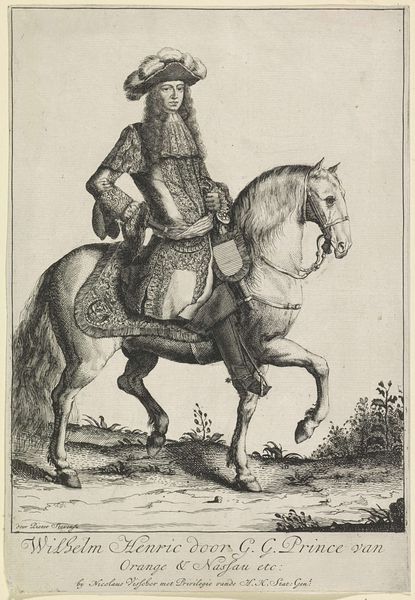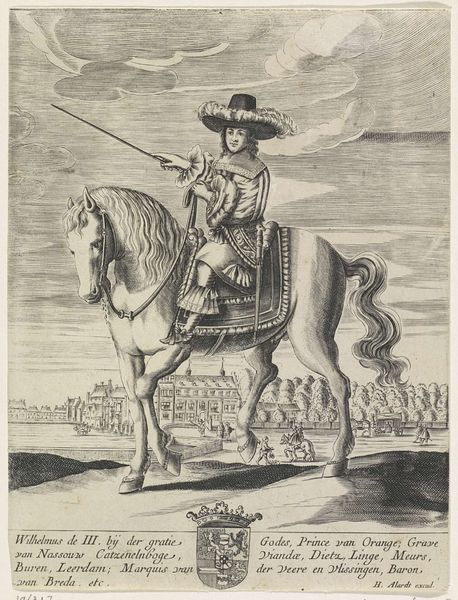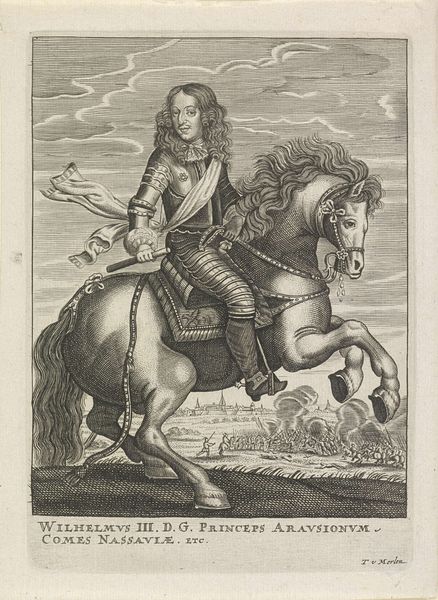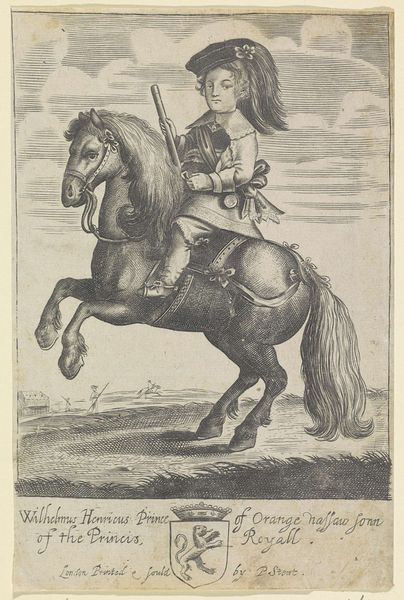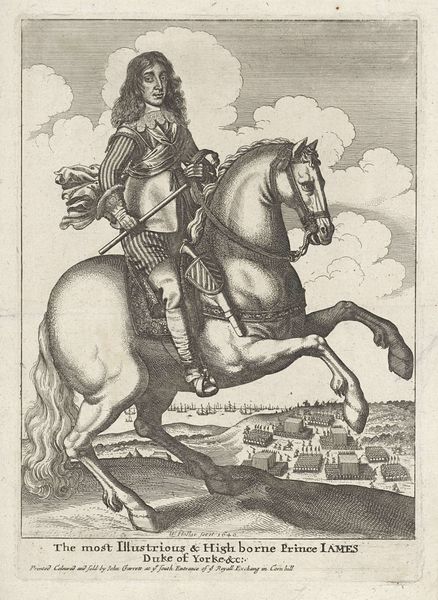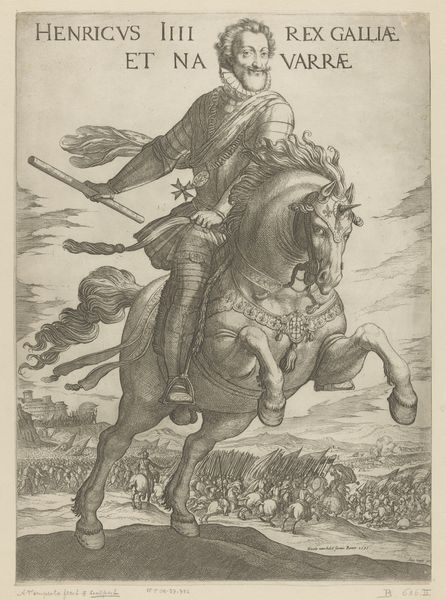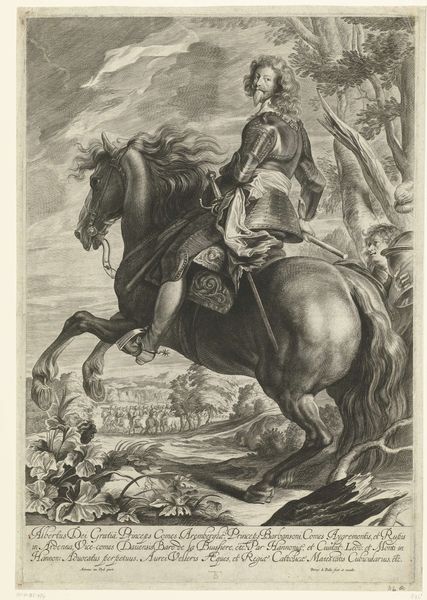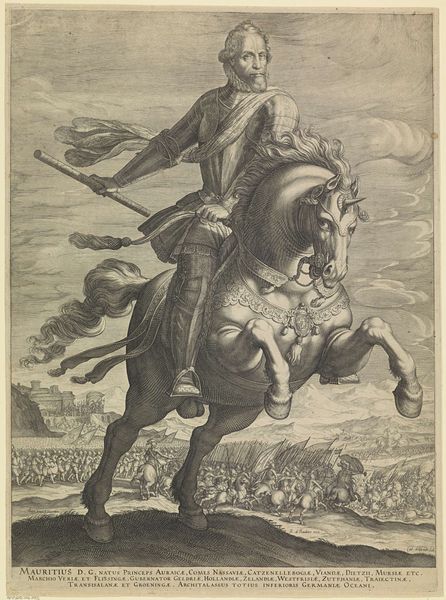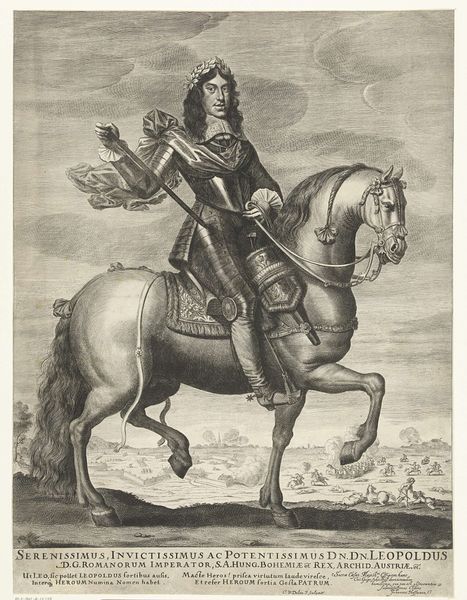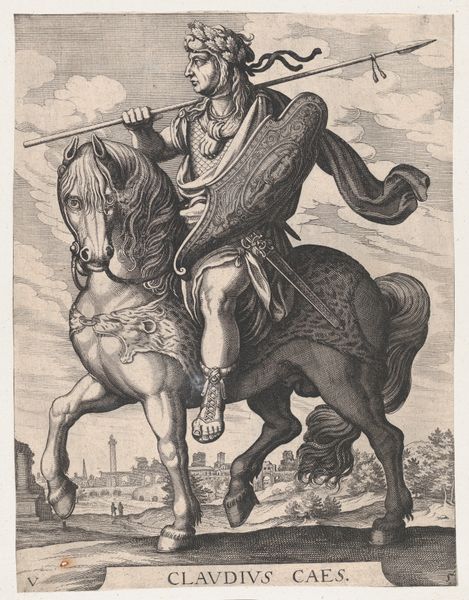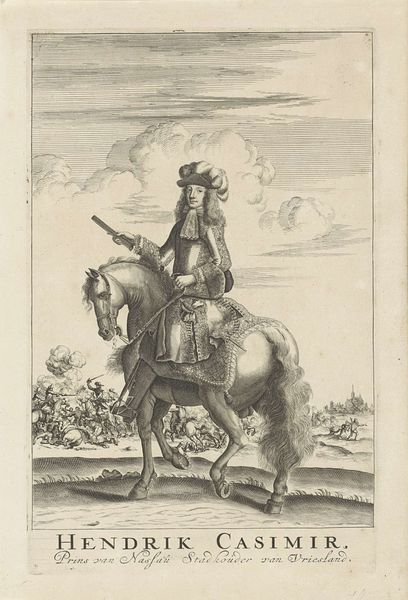
print, metal, paper, engraving
#
portrait
#
baroque
# print
#
metal
#
old engraving style
#
paper
#
cityscape
#
history-painting
#
engraving
Dimensions: height 533 mm, width 409 mm
Copyright: Rijks Museum: Open Domain
This equestrian portrait of Willem Frederik, Count of Nassau-Dietz, was made using an engraving process. The anonymous artist incised lines into a metal plate, likely copper, with a tool called a burin. Ink would have been applied to the plate, then wiped away, remaining only in the incised lines. The plate was then pressed onto paper, transferring the image. The work's visual impact owes much to the precision and detail achievable through engraving. Look closely at the textures of the horse's coat and mane, the intricate armor, and the landscape behind. The artist employed hatching and cross-hatching – closely spaced parallel lines – to create tones and shadows, giving depth and volume to the figures. Engraving in this period was a highly skilled craft, demanding years of training. It was also a commercial art, used for reproducing images and disseminating information. In this case, the technique serves to elevate Willem Frederik's status, connecting him to a lineage of power and authority. It reminds us that even seemingly straightforward portraits are embedded in complex social and economic networks.
Comments
No comments
Be the first to comment and join the conversation on the ultimate creative platform.

